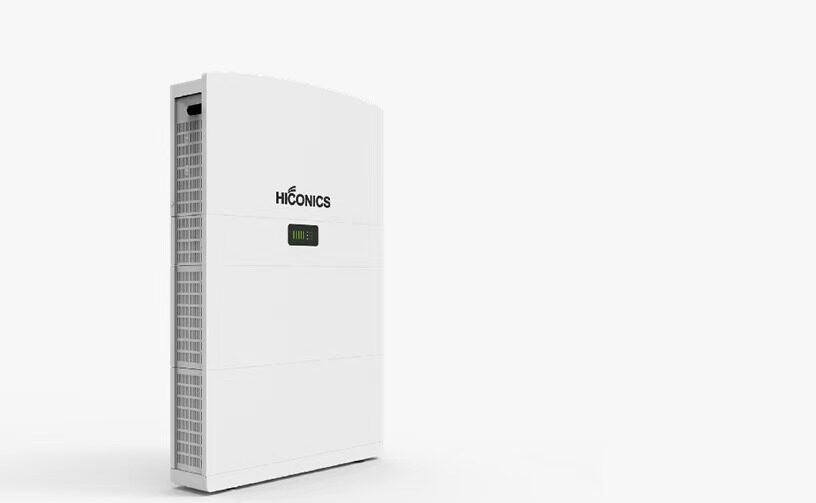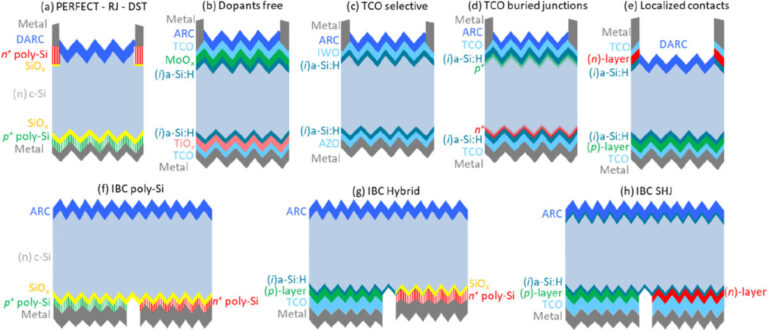Researchers in the Netherlands have investigated how carrier-selective contacts can help to achieve stronger performance in crystalline silicon solar cells with back-contact (BC) and predicted efficiency can achieve up to 28.64%. Their analysis considered work function, energy barriers and energy lines on the pile layers.
A research group led by Delft University of Technology (TU Delft) has carried out a series of electrical simulations in the Netherlands to assess the potential of carrier-selective contacts (CSCs) to achieve higher efficiency in crystalline silicon (C-SI) solar cells and have discovered that their use in the fronts back -hand -contacted (FBC) and Interdigitated Back -Contacted (IBC) designs can help breaking the threshold of 28%.
“Our expertise in accurate and advanced simulations is the core of this visionary approach to unlock the full potential of carrier-selective contacts in C-SI solar cells,” said the accompanying author of the study, Paul ProCel. “We are bridging theoretical and practical knowledge, stimulating design innovations and identifying important bottlenecks that limit the theoretical efficiency of FBC and IBC sun cells. This powerful methodology extends beyond C-Si solar cells and applies to tandem solar cells and other electronic devices.
Research CO author Yifeng Zhao explained that Progress in pattern technology is crucial for achieving record efficiency in C-Si solar cells, making narrower lines and localized contacts in FBC and IBC architectures. “With simulation guidance, we have shown experimental highly localized FBC-SHJ solar cells experimental, which emphasizes the key role of pattern improvements when further stimulating the SHJ solar cell performance,” he added.
In the newspaper “Unlock the potential of carrier-selective contacts: important insights for the design of C-SI solar cells with efficiency more than 28%“Published in Solar energy materials and solar cellsThe research team identified three mutually dependent critical factors that show why CSCs will be a crucial component to achieve higher efficiency and said that these factors can be “rigorously assessed” by resolving the Poisson comparison, what a one Elliptical partial differential comparison used in theoretical physics.
The first factor is the Difference in the work function between the substrate and the deposited material. Future research, the researchers said, will have to help determine when CSCs work better as an electron contact through an electron transport layer (ETL) or a hole contact through a transport layer of a hole (HTL). This would determine the electric field in the bulk of the absorbs, with a lower work function in the deposed layer indicating the ETL and the higher definition of the HTL.
The second important factor is displayed by Energy barriers at the bulk interface of the absorber, which refer to energy lines between occupied and available energy states on both sides of the barrier and the transport of unwanted load carriers effectively hinder and improve the functionality of CSCs.
The key to the creation of the barriers is the compensation of the energy band, the Fermi level and the thickness of layers. “We refer to energy level and width of the energy barrier or high/low and thick/thin respectively,” the researchers said. “Efficient cargo collection, for example, occurs when the energy bars in the guidance or valent bands are low and thin, so that efficient transport of electrons or holes can be done in the N or Pcontact. Since CSCs are designed to selectly collect only one type of cargo carrier, it is desirable to have high and thick barriers in the valence or guidance tires respectively in the N or Pcontacts. “
When it comes to the third factor, the group said that energy conditions are crucial for collecting cargo on the other side of the energy barrier, and notes that the energy conditions on the bulk interface are usually occupied by collecting carriers.
The simulation framework considered various heterojunction (HJT) and Topcon-Zonnecelarchitectures based on various CSC designs, including poly-silicon (Poly-SI) and dopant-free structures. It also took into account the metallization height, C-SI thickness and waffle resistance, where some of the analyzed cell designs were based on transparent guide oxide (TCO) or are free.
“For IBC designs, with a 400 urn wide pitch and 10 Ω cm wafer resistance, we calculated maximum efficiency of 28.53%, 28.54%and 28.64%in the case of IBC Poly-Si, IBC Hybrid and IBC SHJ sun cells, respectively, ‘the academics emphasized. “Our simulation results show that FBC contacts solar cells and all IBC designs are able to achieve efficiency equal or higher than 28%.”
They also identified pattern restrictions as the most important technological barrier that determine the intrinsic efficiency limits in FBC and IBC cells, whereby narrower patterns are noticed as a potential solution.
“What provides insight into our results for both researchers and industries is to distinguish transport mechanisms in different C -Si solar cell architectures and technologies. When all CSC advisements provide both excellent surface -passivation and the selectivity of carriers, the usual lifelong and resistance measurements cannot explain in detail what is going on about contact stacks. Our contribution reveals the interaction between work functions, hetero interface barriers and energy tuning between materials and optimizes such aspects crucial to achieve the final conversion efficiency, “said co-author Olindo Isabella.
This content is protected by copyright and may not be reused. If you want to work with us and reuse part of our content, please contact: editors@pv-magazine.com.
Popular content



